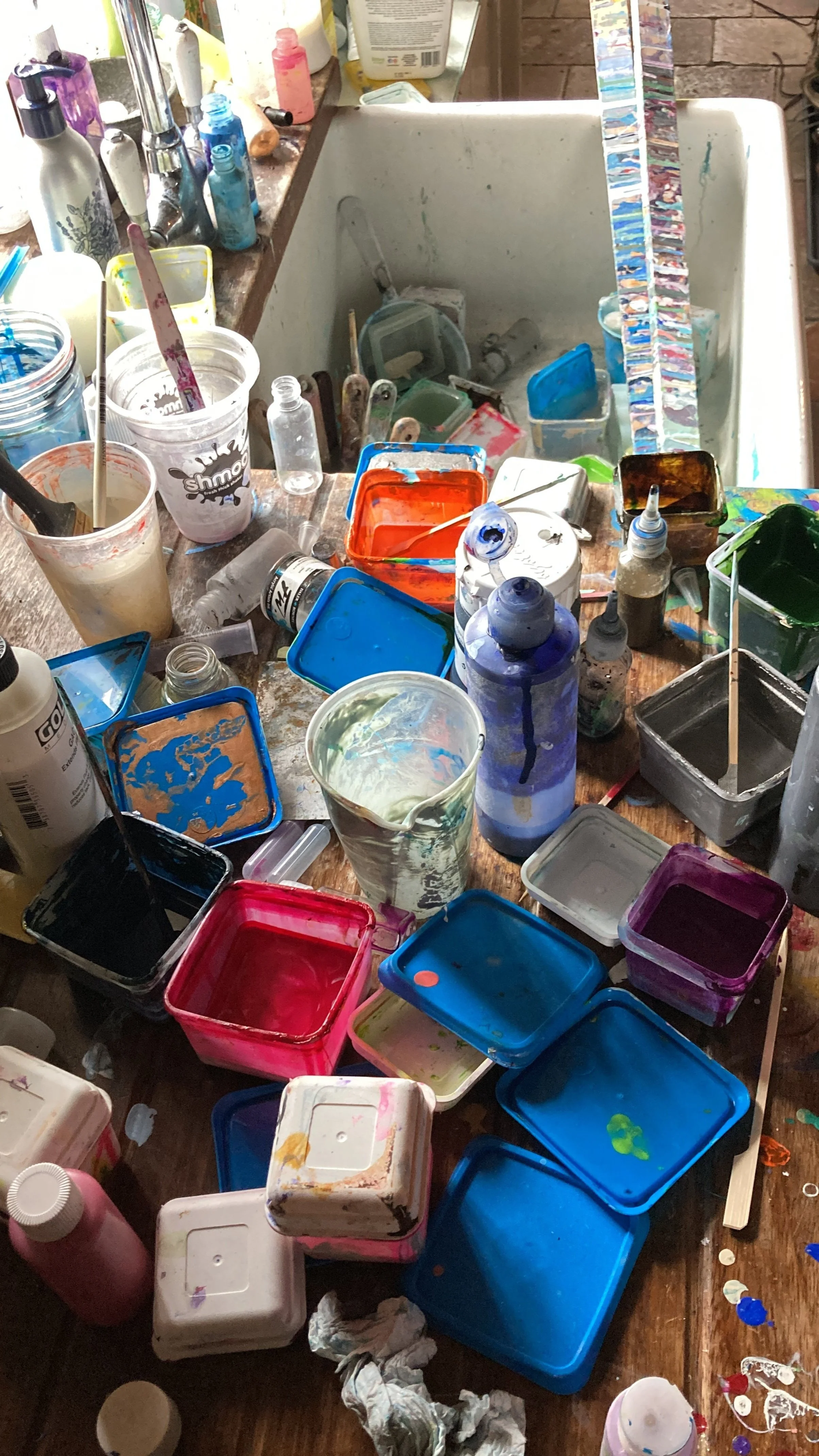The Vital Lesson of Health and Safety
In the realm of creativity, artists often immerse themselves in a world of boundless imagination and unrestricted expression. However, amidst this whirlwind of inspiration, there are valuable lessons from science can teach us about health and safety. Artists, like scientists, have a responsibility to safeguard their well-being while pursuing their passion.
Coming from a science background we are drilled to pretty hot on health and safety . So as an artist working in the studio, what lessons can we learn from the lab about how to keep safe personally, as well as reduce our impact on our planet?
Keeping Safe
Understand what you are dealing with by reading the warning labels. There are international symbols used for hazardous materials that apply equally to the lab and the art studio. Read the safety leaflet and follow the instructions. Just because it is not labelled as hazardous, don’t assume that it is non toxic and treat everything with respect. Some products might not have been tested for their impact on the environment and even traditional materials made from naturally occurring substances can be pretty horrid.
Wear proper protective clothing and tie your hair back. While an old labcoat makes a great painting overall, most people wear old clothes and shoes kept for painting. Proper protective clothing is needed such as a dust mask, or respirator, eye protection and gloves when handling hazardous materials including powders like pigments or glazes. Dust masks need to cover both your mouth and nose and must be replaced frequently.
Reduce your exposure to solvents. Keep them in closed containers and only use them in a well ventilated space. If you use aerosols then do it outside to minimise the chance of breathing in the product or its propellant or proper extraction and respirator if indoors. If you have large amounts of solvent to store then invest in a solvent safety cabinet and keep well away from naked flames and heat sources.
Take care of your health when choosing materials. If you have an allergy to limonene then you will have a problem with ‘environmentally friendly’ turps substitutes made from orange.
Don’t eat or drink in the studio if your materials are in any way hazardous. If like me, you have to work in the kitchen, make sure food is covered and away and don’t prepare food in a sink full of art materials. Never, ever suck your brushes to a point-yuk!
Reduce Environmental Impact
Labs spend a lot of thought on proper disposal of waste. Get it wrong and a visit from the Environment Agency could shut you down.
Regard the sea as starting at your plughole. Find better ways of disposing of paint than washing it down the sink. It might mean a trip to the local tip to get rid of white spirit and waste solvents. I let my waste acrylic paint dry completely and dispose of it as a solid. My rationale is that it is better the pigments are bound up than released in the water. Clean your brushes with a (recycled) rag before washing and then allow the rag to dry outside before recycling.
Reduce your use of toxic materials- find non toxic alternatives. Chemists created some fantastic coloured pigments but included heavy metals such as lead, cadmium, cobalt and nickel so paint can be pretty nasty stuff. Paint manufacturers have been steadily replacing the nasties and finding alternatives. e.g. cadmium free paint. OK they might not be exactly the same, but we need to use them.
Reduce too use of single use plastics. Wooden skewers make great stirring sticks and cocktail sticks are useful to
Reuse paint bottles, glass jars and plastics from the kitchen and then recycle when you are done. Put new canvas on old stretchers, draw on the back of waste sketches, collage failures into new work and recycle bubble wrap to pack pictures etc.
Dried acrylic paint for disposal….or collage?
My kitchen sink -no food preparation here! (lots of scrubbing after)


